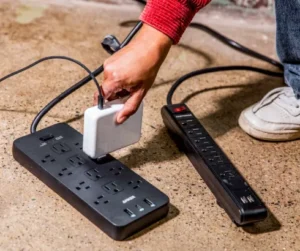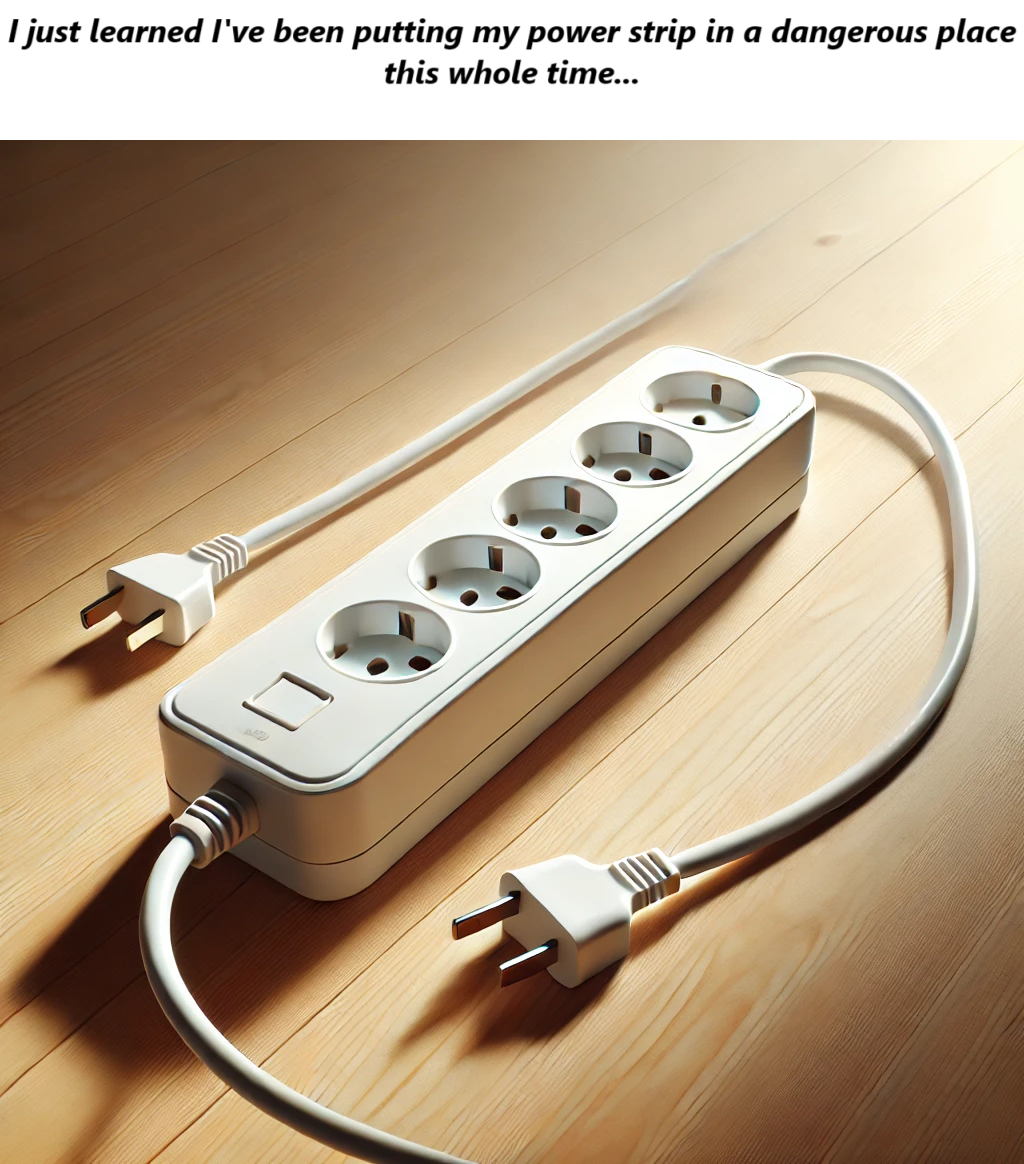Things You Should Never Do With Power Strips
Who among us doesn’t have some of power strips around the house? Behind the entertainment center, under the desk, anywhere we need a few extra sockets for our never-ending array of gadgets.
I work as an electrician, and I have more power strips than I care to admit. Why would it be a problem? Power strips can be dangerous, especially when you overload them or use them for the wrong things. Also, they’re a fire risk, so using them with care and sparingly is very important. As I moved into my current home, I found a melted power strip in the garage, and investigating whether it had caused more damage than was visible added stress and hassle when all I wanted to do was relax and put my feet up.
If you’re wondering when you can use a power strip and all the things you should never do with one, you are in the right place.
When Should You Use a Power Strip?

Be careful. Just because you have spots for multiple plugs doesn’t mean you should use every single one. Power strips and surge protectors don’t add capacity to your circuit. If your circuit breaker says 15 amps, adding a power strip doesn’t change that.
As they’re easy to overload, power strips are best for low-power things like desk fans, lamps, battery chargers and other small devices.
Use surge protectors to plug in televisions, game consoles, computers, and other sensitive devices. Verify the loads of your devices and what’s already powered by the circuit before loading up a power strip or surge protector. Check the breaker in order to determine the size of your circuit, and buy a power strip with the same or larger rating.
Things You Should Never Do With a Power Strip
To lessen the risk of fire when using power strips and surge protectors, follow these common-sense rules:
– Never use power strips or surge protectors so as to plug in high-amp appliances or motors.
Air fryers, microwaves,space heaters, washers and dryers, air conditioners, sump pumps and other major household equipment must be directly plugged into the wall or hard-wired for safety. Even the best power strips can overheat, and they’re not designed for handling the high startup and running currents of motors and appliances.
– Never cover your power strip with rugs or carpeting or stuff it under a dusty old couch
Just like an extension cord, you should never cover your power strip with carpeting/rugs or stuff it under a dusty old couch. Electricity generates heat, and combustibles sitting right on top of the power strip are just asking for trouble.
– Never “daisy chain” power strips by plugging one strip or surge protector into another one.
The likelihood of overloading your circuit skyrockets as you have so many available receptacles. Call an electrician in case you need power where you don’t have it.
Power Strip Safety
Next Page

